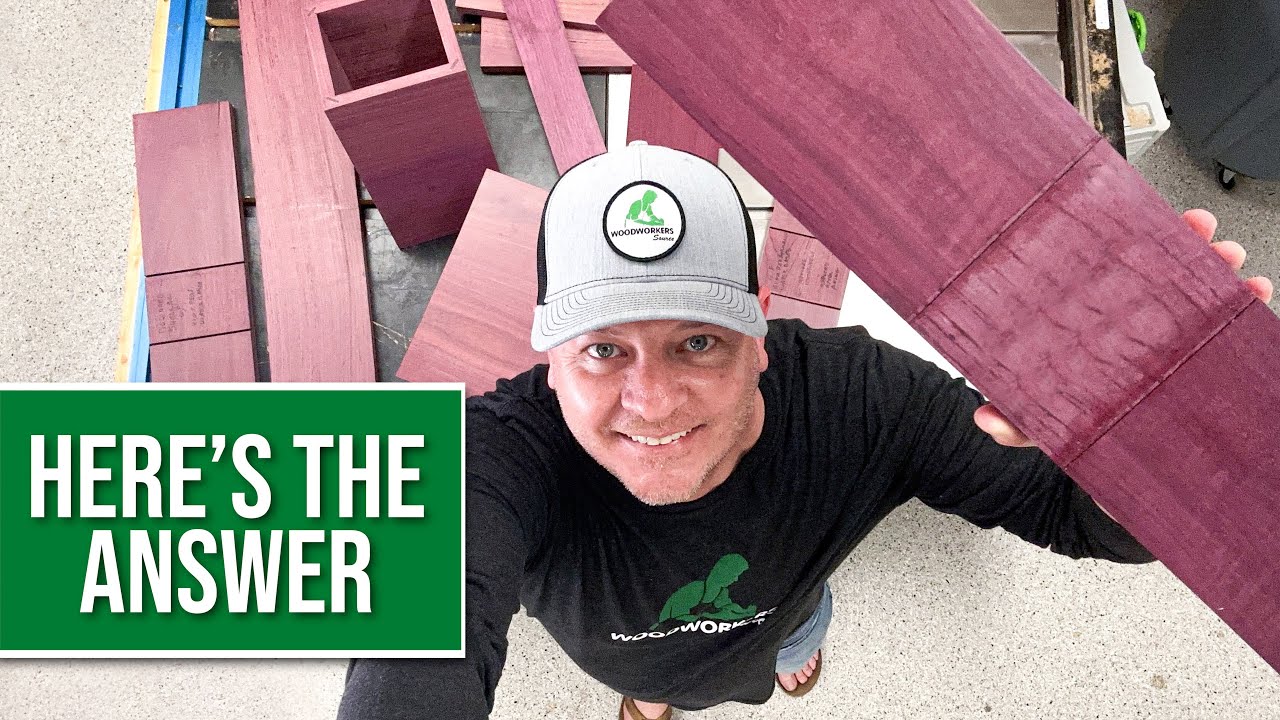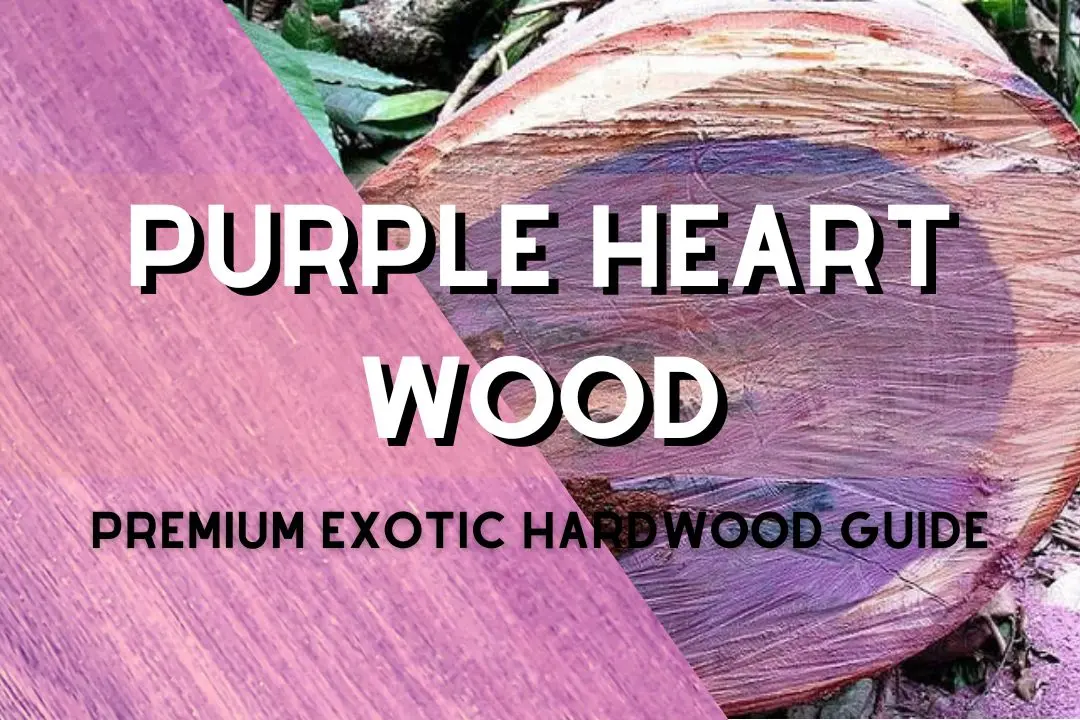
Purple Heart Wood: A Premium Exotic Hardwood Guide

Imagine a wood so vibrant and distinct that it commands attention in any room. Purple heart wood, scientifically known as Peltogyne, is precisely that. It’s a prized exotic hardwood from Central and South America’s tropical regions. Its deep purple hue changes over time, captivating woodworkers, furniture makers, and design fans worldwide.
This guide will explore purple heart wood’s unique traits, benefits, and uses. It’s a sought-after material in fine craftsmanship. Its durability, strength, visual appeal, and versatility make it stand out from traditional woods.
Purple heart wood is known for resisting rot, decay, and insects. Its exceptional properties make it perfect for outdoor projects like decking and fencing. It’s also great for high-end furniture and architectural details. Its fine texture and tight grain allow for precise crafting, creating stunning and durable pieces.
Table of Contents
What is Purple heart wood?
Purpleheart, also known as Peltogyne, is a stunning wood found in Central and South America’s rainforests. It grows in countries like Brazil, Guyana, and Suriname. These purple heart wood trees can reach heights of 100-170 feet and have trunks up to 3-5 feet wide.
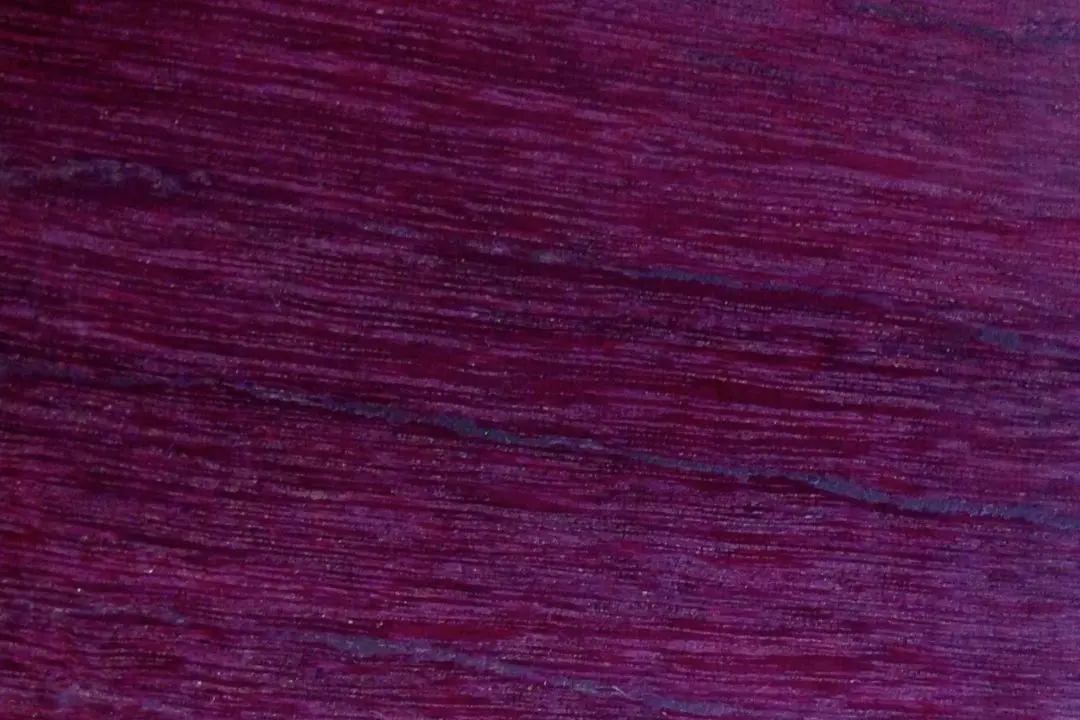
Understanding the Origin and Species
The tree purple heart comes from the Peltogyne genus, with about 20 species. These trees are known for their straight trunks. They can provide long, clear boards, up to 60-90 feet, making them perfect for fine woodworking.
The Science Behind the Purple Color
When cut, Purpleheart’s heartwood is a dull grayish-purple. But, it turns into a deep, rich purple over time. This change happens because of the wood’s chemicals and how it reacts to air and sunlight.
Geographic Distribution
- Purpleheart trees grow well in Central and South America’s rainforests, especially in Brazil, Guyana, and Suriname.
- Some Peltogyne species are endangered or least concerned on the IUCN Red List. This shows why we need to harvest wood responsibly.
- Vintage & Specialty Wood focuses on getting Purpleheart and other special woods in a way that protects the environment.
Purple heart wood is highly valued for making fine furniture, flooring, musical instruments, and decorative veneers. Its beauty and versatility attract woodworkers and fans worldwide.
Purple Heart Wood: Essential Characteristics
Purpleheart is a captivating and resilient exotic hardwood. It’s known for its exceptional strength, density, and durability. This timber has a fine texture and tight grain, making it great for precise cuts and smooth finishes.
The natural luster of purple heart lumber shines when polished or finished. This adds elegance to any project.
Purple heart wood properties stand out for its impressive hardness. It has a Janka hardness rating of 2,520 lbf (11,190 N). This hardness, along with its resistance to decay and insects, makes it perfect for both indoor and outdoor use. It ensures long-lasting performance with minimal maintenance.
- Peltogyne genus consists of 24 accepted species of flowering plants, with Peltogyne purpurea being the most popular type commonly known as Purpleheart.
- Purple heart trees can grow up to 30 to 50 meters (100–170 ft) tall with a trunk diameter of up to 1.5 meters (5 ft).
- Purpleheart trees are primarily found in the rainforests of Brazil, Suriname, Guyana, Panama, Costa Rica, Trinidad, and the Mexican state of Guerrero.
The wood’s tight grain and natural luster make it a joy to work with. It allows for precise cuts and a smooth, polished finish. Whether in furniture, cabinetry, or architectural details, purple heart lumber is a premium choice. It exudes timeless elegance and uncompromising durability.
“Purple heart wood is one of the most sought-after exotic hardwoods, prized for its exceptional strength, durability, and striking visual appeal.”
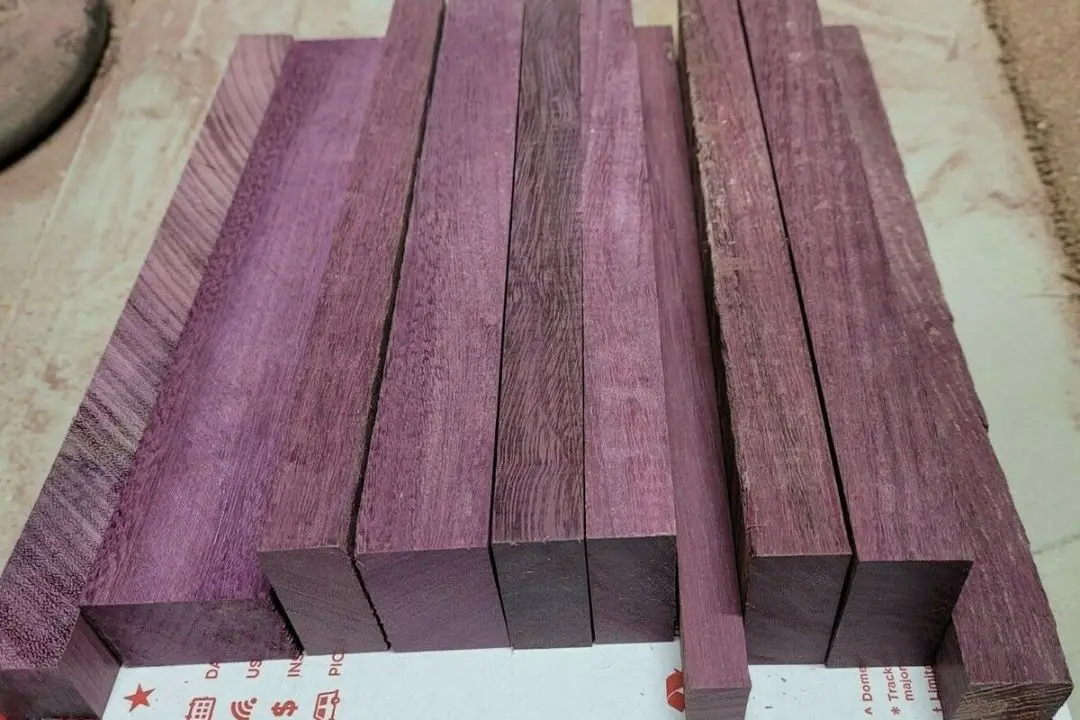
Purpleheart is a true standout in fine woodworking. Its unique characteristics make it valuable for a wide range of projects. From custom furniture to outdoor structures, it ensures a lasting and visually stunning result.
Physical Properties and Durability
Purple heart wood is known for its deep purple color and toughness. It has a Janka hardness rating of 2,520 lbf (11,190 N). This makes it very resistant to dents, impacts, and wear. Its strength and natural water resistance make purple heart wood great for outdoor uses like decking and truck bed flooring.
The wood’s grain and texture are straight to irregular and fine to medium. This makes it easy to work with and look good. Plus, its natural resistance to decay, rot, and insects means it lasts a long time in many projects.
Janka Hardness Rating
Purple heart wood has a Janka hardness rating of 2,520 lbf (11,190 N). This is one of the highest ratings for any wood. It shows the wood’s strength, making it perfect for places with a lot of traffic and where it needs to resist wear and denting.
Resistance to Decay and Insects
Purple heart wood naturally resists decay, rot, and insects. This makes it very durable. It can handle the elements well and stay strong for years, both indoors and outdoors.
Grain Pattern and Texture
Purple heart wood has a unique grain pattern and texture. Its straight to irregular grain and fine to medium texture add to its beauty. They also make it easy to shape and finish without losing its strength and stability.
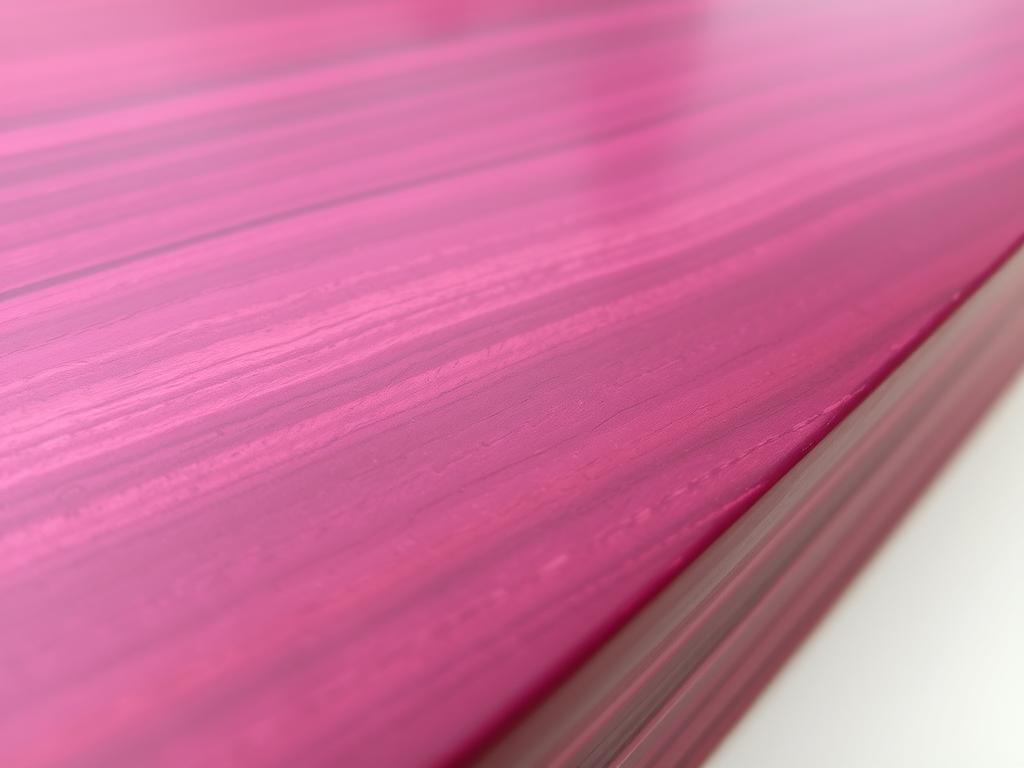
“Purpleheart’s exceptional hardness and durability make it a premier choice for high-impact applications, ensuring long-lasting performance and a stunning aesthetic.”
Working with Purple heart Lumber
Purpleheart is a hardwood known for its deep purple color. It’s dense and hard, making it durable and eye-catching. However, working with purple heart wood needs special tools and methods for the best results.
One big issue with purpleheart is it can split easily because it’s brittle. Also, its high resin content can make gluing tricky. When using power tools, be careful to avoid burn marks on the wood.
- Purpleheart wood can splinter easily, necessitating the use of gloves during handling.
- The wood can be splintery, making it difficult to work with hand tools like hand planes.
- Purpleheart wood needs to be de-greased before glue will hold, which can be achieved by cleaning with lacquer thinner or acetone.
- Epoxy glue might hold better than regular water-based glues on purpleheart wood.
Despite the challenges, purpleheart is versatile for many uses. It’s great for guitar tops, timber frames, and luxury furniture. Its stability and resistance to warping make it a favorite among woodworkers and designers.
| Characteristic | Description |
|---|---|
| Color Changes | The color of purple heart wood can change after exposure to light and air, leading to a darkening of the purple hue. Treatments like baking, acid application, or finishing can help restore and enhance the vibrant purple color. |
| Workability | Purpleheart wood can be challenging to work with, as it is prone to splitting, splintering, and causing burn marks on the surface. Careful tool selection and techniques are crucial to achieving a smooth, high-quality finish. |
| Applications | Purpleheart wood has its challenges, but it is valued for its beautiful look. It is used in many ways, such as custom cabinets, decorative inlays, architectural features, and high-quality cutting boards. |
In conclusion, working with purple heart wood needs patience, skill, and a love for this unique material. With the right tools, techniques, and finishes, woodworkers can create stunning, lasting projects.
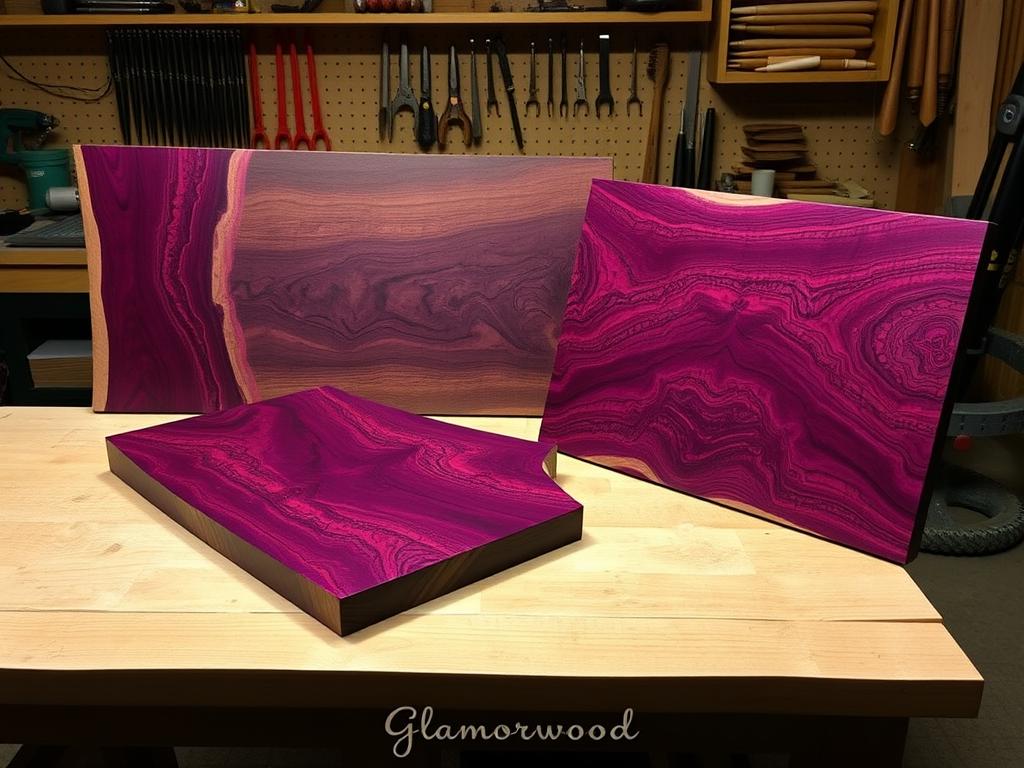
Applications in Fine Furniture Making
Purple heart wood is known for its vibrant purple color. It’s strong, dense, and lasts long, perfect for many woodworking projects. This includes custom cabinets and decorative pieces.
Custom Cabinetry
Furniture makers love purple heart wood for its bold color. It’s great for making pieces that stand out. The wood’s tight grain and smooth finish help with detailed cuts, making cabinets look amazing.
Decorative Inlays
Purple heart wood is also beautiful for inlays and accents. Woodworkers mix it with other woods like maple or oak. This creates eye-catching designs in furniture, floors, and even musical instruments.
Architectural Elements
Purple heart wood is perfect for building features like stairs, moldings, and floors. It’s durable and resists moisture and insects. This makes it great for busy areas and outdoors, lasting a long time.
Purple Heart Cutting Board
Purple heart wood is also used for cutting boards. It’s very hard, with a Janka hardness rating of 1860. This makes it durable and long-lasting. Its unique color also adds elegance to kitchens.
“The rich, distinctive color of purple heart wood is truly a natural marvel, making it a sought-after material for furniture makers and designers alike.”
Sustainable Harvesting and Environmental Impact
Purpleheart, a sustainable exotic hardwood, is harvested under strict rules to protect it. It’s important to buy purple heart wood from sources that follow exotic wood sourcing best practices. This helps keep the species safe in its natural home.
Purpleheart lasts a long time, which is good for the planet. It means we don’t need to make new products as often. This reduces waste and helps the environment.
“Wood from managed forests is considered an infinitely renewable resource.”
The USA’s hardwood forests have grown a lot since 1953. By 2007, they had almost doubled in size. This growth, along with careful harvesting, means we can keep using sustainable purpleheart for years.
The American hardwood industry is a big player in forest health. It focuses on exotic wood sourcing and forest care. This way, it helps keep the forests beautiful and healthy for purpleheart and other woods.
Finishing Techniques and Color Preservation
Keeping the stunning purple color of Purple heart wood is a big goal for many. The wood’s color changes when it meets air and sunlight. But, with the right finishing techniques, you can slow down this change.
Surface Preparation Methods
Getting the surface right is key when working with Purpleheart wood. Sanding it smooth is important, but don’t take off too much. This could make the wood lose its unique color. Experts suggest starting with 120 grit sandpaper and going up to 220 or 320 for the best finish.
Protective Coating Options
There are many ways to keep Purpleheart wood’s color safe. Clear lacquers or varnishes are good at blocking out damage. Water-based finishes might not darken the wood as much as oil-based ones. Adding UV inhibitors to oil-based finishes helps protect against sunlight damage.
Preventing Color Changes
It’s important to keep Purpleheart wood away from direct sunlight. The UV light can change the wood’s color to brown or silver. Using a top coat with UV protection, like polyurethane or lacquer, can help keep the wood looking its best.
By using these Purple heart wood finishing methods, you can keep the wood looking great for a long time. This ensures the beauty and appeal of this special hardwood.
Conclusion
Purple heart wood is a top choice for woodworkers. It’s known for its beauty, strength, and durability. Its unique purple color and resistance to decay make it perfect for many projects.
Woodworkers can make amazing pieces with purpleheart. It’s great for furniture, flooring, and even decorative items. This wood is loved by many around the world.
Working with purpleheart requires knowledge and skill. But with the right techniques, woodworkers can create stunning pieces. Whether indoors or outdoors, purpleheart offers endless possibilities.
The demand for premium hardwoods like purpleheart keeps growing. Its unique qualities make it a favorite among woodworkers and design fans. Working with purpleheart can be challenging, but the rewards are worth it.
FAQs
Where does Purpleheart wood come from?
Purpleheart wood originates from trees of the Peltogyne genus, which are native to Central and South America. These trees are primarily found in tropical rainforests.
What is Purpleheart wood?
Purpleheart wood is a strong, hard type of wood. It is known for its bright purple color. This color appears when the wood is exposed to air and light. It is prized for its unique appearance and is often used in fine woodworking, furniture, and decorative items.
Is Purpleheart wood toxic?
Purpleheart wood is not very toxic. However, its sawdust can irritate the skin, eyes, or breathing in some people. It’s advisable to use protective equipment, such as masks and gloves, when working with it.
Where does Purpleheart wood grow?
Purpleheart wood grows in tropical rainforests across Central and South America. The trees prefer rich, moist soils and thrive in regions with high humidity and consistent rainfall.
Is Purpleheart wood harvested and traded sustainably?
Yes, Purpleheart wood is harvested and traded sustainably. Regulations ensure its population stays healthy. Buying from certified sustainable sources helps the environment.
How should Purpleheart wood be finished and maintained?
Finishing Purpleheart wood needs careful thought to keep its color. Sanding properly is key. Use clear lacquers or UV-resistant finishes to protect it. Try to limit direct sunlight to prevent color changes.
How does the color of Purpleheart wood change over time?
When first cut, Purpleheart wood is bright purple. Over time, it darkens to a deeper, richer color. This change happens due to light and air exposure.
